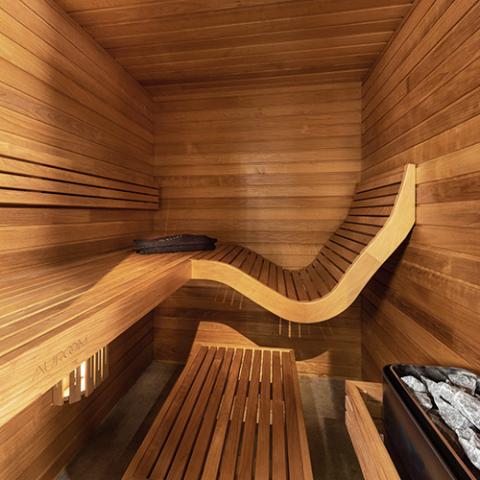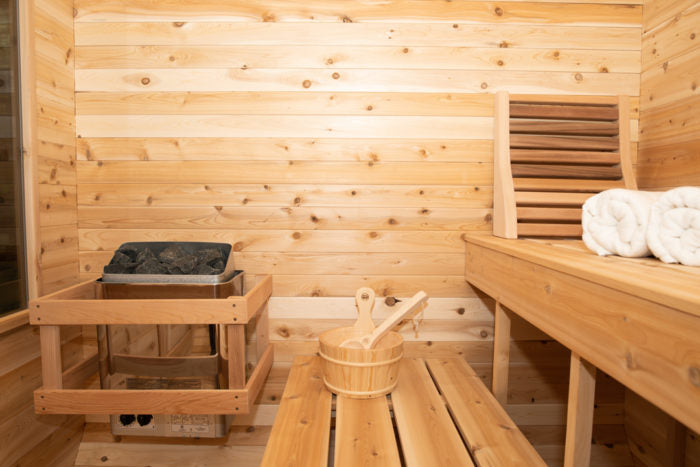Some Known Questions About Traditional Sauna.
Table of ContentsThe Basic Principles Of Traditional Sauna Some Known Factual Statements About Traditional Sauna Traditional Sauna for DummiesHow Traditional Sauna can Save You Time, Stress, and Money.Not known Factual Statements About Traditional Sauna
The majority of the weight lost in a sauna is water loss and is re-gained upon rehydrating. Without an uncertainty sauna can be a vital component of a healthy weight loss program. To look at the differences in between standard and IR saunas, I will divide these right into verifiable, academic, and produced distinctions.
Thus, the hottest point in the saunawhich goes to the ceiling straight above the sauna heateris generally between 185 and 190 F. Claims that a conventional sauna goes beyond 200 F is just not real and not relevant for electric saunas offered in the United States. The temperature level for a far-infrared sauna is usually established in between 120 and 140 F; nonetheless, unlike the standard sauna, the goal in and IR space is not to achieve a heat.
Due to the fact that of this, the temperature level difference is nearly unnecessary, since excessive sweating causes both sauna types, yet the approach of heating the body is different. In an IR sauna the bather will feel warm and will certainly sweat profusely, but at a lot lower temperature levels (Traditional Sauna). Hence, if the goal is to invest longer amount of times in the sauna, the IR sauna is an excellent option
When a standard sauna has been correctly heated, the sauna walls are warm, the air temperature has actually achieved established temperature and the rocks are super warmed. As a fascinating side note, the heated wall surfaces and the rocks are sending out far-infrared warm, incorporated with the heated air, to create an "wrapping up warmth".
Little Known Facts About Traditional Sauna.

When the heat is accomplished, the components cycle on and off to keep the high temperature. A lot of traditional sauna individuals appreciate putting water over the rocks to produce heavy steam to raise sauna humidity degrees. The benefits of putting water over the rocks consist of: making the space much more comfortable, dampening the nasal passages, and enabling the use of aromatherapy by blending important oils with the water.

When the energy enters the body, it creates the body temperature to boost and eventually results in sweat. In an infrared sauna it is necessary for the emitters/heaters to remain on virtually continuously. Considering that there is no mass of rocks to preserve heat, the sauna will certainly cool if the emitters closed off.
As discussed over, the sauna bather in an infrared area wants to place himself before operating emitters to get optimal gain from the warm. The home heating time for both rooms can be extremely various, depending on exactly how the areas are used. For a standard sauna, a bather ought to enable 30-40 mins for the space to achieve a desired temperature level and to appropriately pre-heat the rocks.
The Buzz on Traditional Sauna
A well built sauna will typically achieve a temperature level of 150-160 F in concerning 30-40 minutes. For hotter temperatures, the space may need to heat for a longer period.

Standard saunas have a tendency to be bigger (for this reason use even more electrical power) than infrared saunas, although typical saunas are absolutely readily available in one and two individual sizes. For a two-person standard you can check here sauna, 5x6 or 5x7 size is most prominent. The leading bench can easily seat 2 or three individuals and is also long enough to relax during the sauna session.
The Basic Principles Of Traditional Sauna
The typical price per kWH of electrical power in the united state is about $0.11, so a 4.5 kW heating system will cost roughly $.50 to compete one hour, if the heating unit runs constantly for one hour. Normally a sauna heating system will certainly compete 75% of the first hour and 50% of succeeding hours on given that the aspects cycle once the set temperature is accomplished.

Lastly, there is a rarely reviewed difference in the social experience between both spaces. While our culture has actually shed a few of the social benefit of the traditional sauna experience, it can be very socially rewarding (Traditional Sauna). From household time in the sauna, to heart-felt discussions with better halves, to sauna partiesthe traditional sauna experience can lead to intimate mingling
The Facts About Traditional Sauna Revealed
A lot of greater end infrared rooms consist of colored light therapy, noise systems click for more and full-glass fronts.
Comments on “Getting My Traditional Sauna To Work”